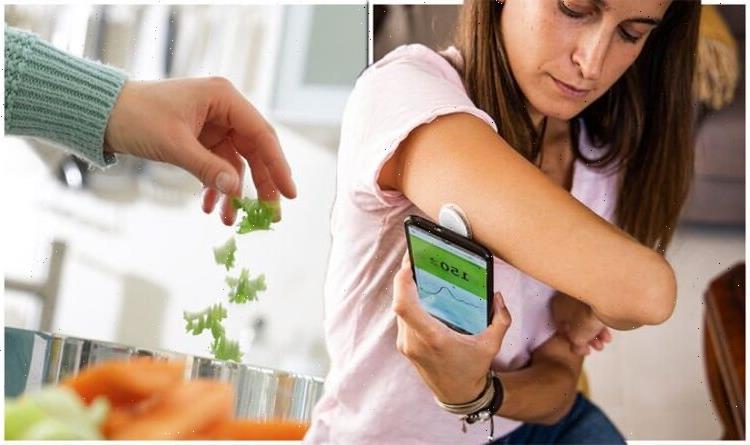Type 2 diabetes can be a 'devastating diagnosis' says expert
We use your sign-up to provide content in ways you’ve consented to and to improve our understanding of you. This may include adverts from us and 3rd parties based on our understanding. You can unsubscribe at any time. More info
According to diabetes.org, “more people than ever” are at risk of developing type 2 diabetes. Around 90 percent of the 4.9 million adults in the UK with diabetes have type 2, which is often caused and controlled by diet and lifestyle choices.
People at risk of diabetes, or those who are living with the condition, are encouraged to switch up their diet in favour of a healthier, more balanced one.
Though there are many changes to make, one key thing to keep an eye on is your sodium intake.
The NHS advises people to keep salt intake to a minimum, while still eating three meals a day.
Diabetes UK explains: “Although salt does not affect blood glucose levels, it’s important to limit the amount you eat as part of your diabetes management because too much salt can raise your blood pressure.”

Eating too much salt can increase your risk of high blood pressure, which in turn increases the risk of heart diseases and stroke.
People with diabetes are already at more of a risk of all of these conditions, so they should pay special attention to the sodium levels in their food.
Diabetes UK recommends limiting yourself to no more than six grams of salt a day – that is roughly one teaspoon.
One way to keep your sodium intake in check is by thoroughly inspecting the nutrition value of pre-packaged foods.
DON’T MISS
Samuel L Jackson: Actor on drastic life-saving health changes [REVEALED]
Stroke: The supplement that could reduce the risk of stroke by 73% [REPORT]
Statins side effects: Two signs in your vision [INSIGHT]
Even some sweet treats can have surprisingly high salt levels.
For some people, though, salt is a quintessential part of cooking.
However, you don’t necessarily need to use salt to add flavour, and diabetes UK recommends switching up how you flavour your dishes.
They state: “Cooking from scratch will help you keep an eye on how much salt you’re eating.

“You can also get creative and swap out salt for different types of herbs and spices to add that extra flavour.”
Herbs and spices are commonly used as a seasoning, without the need for salt, in countries around the world.
Using herbs and spices is a great way to make use of your spice rack, or your garden if you grow your own herbs.
If you are unsure, start by trying out small amounts to see if you like them.

The British Heart Foundation also provides a full guide on how to incorporate different herbs and spices into your cooking.
For dishes with a fresh flavour, for example, fresh mint leaves can elevate the taste.
Rosemary, on the other hand, is an aromatic herb that can be quite overpowering.
This is best suited to grilled meats, bread, pizzas and roasted vegetables.
Source: Read Full Article
